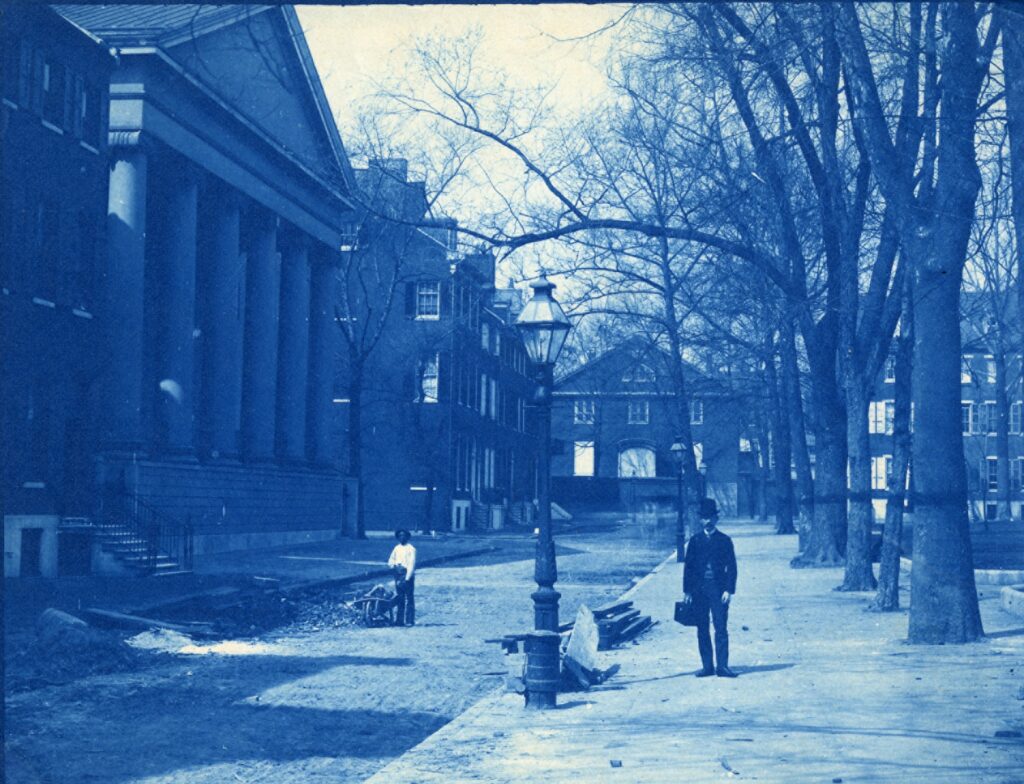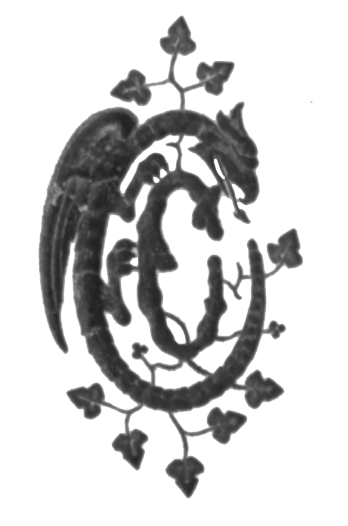
Orthodox Friends & the Hicksite Split of 1827
Philadelphia was at the center of a schism in the Society of Friends in the early half of the nineteenth century. Though the rift is usually attributed to one man, Elias Hicks, he simply represents the culmination of several theological and socioeconomic differences that deepened as the country grew.
As described by scholar Thomas Hamm, Hicks was “a man defending what he understood to be traditional Quakerism against the assaults of innovation and the world” (15). Hicks and those who shared his views emphasized quietism and the Inner Light against Orthodox Quakers’ embrace of evangelicalism and understanding of Atonement and Original Sin; he decried the use of products of enslaved labor and most cooperative efforts toward social improvement.
The Evans family was at the center of this schism. Hugh Barbour and J. William Frost suggest that Jonathan Evans (1769-1839), as a former clerk of the Yearly Meeting and elder of the Philadelphia Monthly Meeting helped to ignite the controversy through his 1819 public disapproval of Hicks wherein the men’s meeting at Pine Street adjourned while Hicks was visiting the women’s meeting (175; Evans 66). Janet Moore Lindman similarly points to Evans’ son, William Evans, and his 1823 response to Priscilla Hunt’s quietist theology as a symbol of the burgeoning rift and the influence of gender as the younger Evans criticized Hunt’s preaching and father and son alike refused to stand at the Pine Street Meeting (1).
Like the Evans family, the Copes typified the Orthodox Quaker in early nineteenth-century Philadelphia. Most were white, male successful urban merchants and entrepreneurs who embraced industrialization and were involved in manufacturing and canal and railroad construction. According to Robert Doherty, “more than seventy per cent of them had sizable holdings in stocks and bonds” (28); Thomas P. Cope ran a successful shipping company and provided financial support for one of the city’s major projects, the Pennsylvania Railroad (Emlen 1.5). In contrast, Hicksites “included artisans displaced by an industrial economy, farmers with heavy mortgages,” and those resistant to change and intolerance (Hamm 16). Such a pursuit of wealth ran counter to the quietist doctrine of Elias Hicks, but perfectly fit within the evangelical framework of wealth as a reward of faith (Hamm 16). This wealth, in turn, would allow them to contribute to and influence society as they helmed public welfare projects.
These burgeoning differences culminated in a schism at the 1827 Philadelphia Yearly Meeting. When the Philadelphia Monthly Meeting for the Southern District was established in 1772, members met at the Quaker Meeting House on Orange Street. After the Hicksite separation, this Meeting remained with the Orthodox Friends, where the Copes continued to worship:
Our meeting for worship for First day mornings & afternoons [—–] days have been discontinued at the Pine Street House, & all belonging to the Southern District Monthly Meeting now assemble at the Orange St. House. It has however been concluded by the Monthly Meeting to allow a First day evening meeting to be held in the Pine St. House & last evening it was for the first time so held. It was well attended, was very quiet & several of our friends had service I have no doubt to general satisfaction. How long these evening meetings will be held I don’t know but I suppose not after warm weather begins.
Henry Cope to Alfred Cope, March 10, 1834
While exploring the collection, consider how their Orthodox values may have guided their actions.
Gurneyites and Wilburites
While the Wilburite controversies of the 1840s were of less immediate importance than the Hicksite schism to Philadelphia as a whole and for the Cope and Evans families in particular as the controversy first took hold in the western United States, they sowed further discord among Orthodox Quakers in the Philadelphia Yearly Meeting. John Joseph Gurney, who first came to the United States in 1837, came to stand as “the voice of a Quaker culture that was rapidly becoming a part of and was being increasingly influenced by the larger culture of American evangelicalism” (Hamm, 22-23). Gurneyites based their doctrine on scripture, while followers of John Wilbur vested in the writings of early Friends and the quietist vision (Hamm 28-29). It was Gurneyites who led the founding of Haverford College and who were the most influential in reform work. While Wilburites held a majority in the Philadelphia Yearly Meeting, the powerful Gurneyite minority forced years of unease until an 1857 compromise (Hamm 34).
Letters written by the Cope-Evans family in the Cope-Evans Family papers are not explicit in their mention of these controversies, just as they rarely mention the individual complexities of the meetings they attended. Yet Gurney’s name appears well into the 1890s as friends and family continued to read his work. In July 1840, friend Hannah Vaux wrote to Anna Stewardson Cope (1822-1916):
The First day morning before he left he attended the North Meeting, and gave us a very interesting and beautiful sermon, taking his text from the sixty third chapter of Isaiah, ninth Verse. After meeting Sister Mary and myself were returning home, when Friend Paul joined us and said, that she had fully expected we would have called to see Friend Gurney the evening before, that there was a number of friends and young people assembled at their house, between sixty and seventy she thought, to bid him Farewell, and insisted upon our going home with her; as she said that it would be our last oppurtunity, we accordingly accepted her invitation, highly grateful as thee may suppose. Our particular facourite E. P. Kirkbride was there when we arrived, and seveal other friends. Friend Gurney was very much pleased to see us, he said that he had been expecting us, and was very glad we had come, he seated himself close by us and conversed awhile very sweetly, after which we bade him adieu, wishing him a prosperous voyage and safe return, he sent his Love to all the family a kiss to the younger ones. He had an appointed meeting at the Arch Street house in the evening. (I was very much surprised a few days after to hear that you had not attended it). It was very large, he addressed us in a very interesting manner and furnished with a most touching prayer, in which he commended all his Endeared Friends, to the protection of that Saviour, who had so long sheltered him under his parent wing, and had been with him, in joy and in sorrow in this land.
Transformation and Response
Despite these schisms, Philadelphia Quakers remained a close-knit community. Orthodox Quakers tended to live in close geographic proximity–nearly half in the approximately ten-square-block area bounded between Front, Arch, Market, and 11th Streets (Doherty 33)–and maintained close personal and professional relationships. Though the issue of political participation had been a factor in the Hicksite separation of 1827, Orthodox and Hicksite Quakers alike had come to embrace causes of abolition, though often in varying ways and to differing degrees, and temperance (Benjamin 91).
Indeed, in the late nineteenth and early twentieth centuries, Quakers believed that “Philadelphia had transformed into an industrial city plagued by crime and local unrest and directed by political professionals who ignored moderation and traditional moral standards” (Benjamin 73). Urbanization in Philadelphia brought to light a number of issues that became the basis for social and political policies. Educational reform and the rights of immigrants, women, and Black Americans soon took precedence while the rise of factories led to debates over appropriate work hours, fair wages, and the use of child labor. The changes brought about by industrialization and the market economy caused Philadelphia Quakers to continue to vigorously debate how to reconcile their values with the demands of industrial city life (Benjamin 212-215).
While commercial life in Philadelphia continued to grow as the city transitioned into the Gilded Age, the pursuit of excess wealth ran counter to the principles of Quakerism. Both Orthodox and Hicksite meetings issued disciplines in the 1860s and 1870s requiring Friends to maintain “complete integrity in their dealings with all men, urged them to keep strict accounts of financial transactions, and inveighed against the evils of speculation. An excess of riches constituted as bad a mark against a man as dire poverty” (Benjamin 51). Quakers did not necessarily argue against wealth itself, but against its mismanagement; failure in business opportunities represented a religious and moral failure, and wealth should be devoted toward public good. As a result of their wealth, many members of the Quaker population in the city found themselves in powerful positions as “members of the boards of the city’s banks, corporations, and social agencies” (Benjamin viii).
The subsequent Progressive Era (1896-1920) saw a wave of legislation for social reform in the nation’s largest cities, including New York City, Baltimore, and Philadelphia.
The Cope-Evans family’s letters provide insight into their thoughts and feelings about these problems. Education reform, philanthropy, and business ventures in Philadelphia’s booming economy were some of the most significant ways in which the families engaged with the changing world around them.
Bibliography
Barbour, Hugh, and William J. Frost. The Quakers. Indiana: Friends United Press, 1988.
Benjamin, Philip S. The Philadelphia Quakers in the Industrial Age, 1865-1920. Philadelphia: Temple University Press, 1976.
Doherty, Robert W. “The Growth of Orthodoxy.” Quaker History 54, no. 1 (1965): 24-34.
Emlen, Elizabeth, et al., ed. Cope, Emlen, Evans, Stokes Families: 1682-2002. Baltimore: Gateway Press, 2005.
Evans, William Bacon. Jonathan Evans and his Time, 1759-1839: Bi-Centennial Biography. Boston: Christopher Publishing House, 1959.
Hamm, Thomas D. The Transformation of American Quakerism. Indiana University Press, 1988.
Lindman, Janet Moore. “‘Deluded Women’ and ‘Violent Men’: Women, Gender and Language in the Hicksite Schism.” Quaker History 109, no. 1 (2020): 1-26.

